Your Ultimate Guide to Shooting an Interview
Find all the tips and tricks in one place. Now, you’re one step closer to achieving your ideal interview video.
12 minute read
Interview shot at the Kempinski Hotel by SmartCuts Creative.
Shooting interviews is part of the core competence here at SmartCuts Creative. We do lots of these in a variety of situations: run-and-gun, corporate sit-down, in the field, on green screen and so on. There’s the technical aspect of the job: getting the light right, the audio. But there’s also the content aspect: how to ask the right questions to get the sorts of answers you want on tape.
Interviews can be really useful for brand awareness. They can establish your brand’s credibility, adding a human touch to your products and services.
The Ultimate Guide to Shooting an Interview
1. Introduction
2. How to conduct an interview effectively?
3. How do you prepare for filming an interview?
4. Tips for filming interviews
5. Being an interviewee
6. Sample interviews – styles and techniques
7. Implement interviews into your marketing schemes
8. Final thoughts
How to conduct an Interview effectively
An interview is a two-way, or more than that, conversation, where an interviewer and a client exchange information. Before getting to the nitty-gritty of the set-up and logistics of producing professional interview videos, there are 4 main factors to consider for a powerful and successful interview:
- Proper preparation for the video interview, including outlining points to be covered during the interview.
- Understand the tone of the interview – in turn, this will help develop more focused interview questions.
- Have the right balance of letting the client/interviewee speak and the interviewer taking control of the discussion.
- Focus on creating open-ended questions rather than yes-no questions. This will allow interviewees to speak freely in their response.
This may seem easier said than done, so…
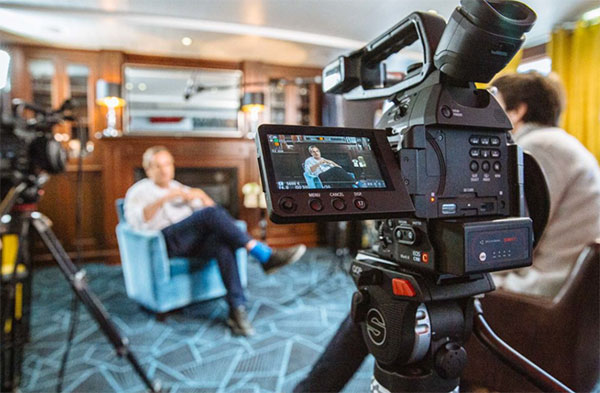
How do you prepare to shoot a video interview?
Here are 3 main points to focus on when preparing a video interview:
- Prepare questions and complete the necessary research.
- Be sure to have made clear decisions and to communicate them to the interviewee well ahead of the interview. This refers to logistics, for instance, deciding whether your interviewee will look towards the camera or off-camera, to the side.
- Make people feel comfortable. Know that it’s a safe space, thus provoking more thoughtful and calm answers. The final interview will come across much more professional.
Tips for filming Interviews
The following key steps are important to think about when producing an interview video. They are essential in making a video that is crisp, clean and professional. Essentially, you want this interview video to really reflect the quality of your brand, products and services.
Parker Walbeck’s approach is noteworthy. He’s a professional filmmaker with experience in Hollywood and over 600,000+ YouTube subscribers. Here are 5 of Parker’s steps to shooting an interview:
1) FIND THE RIGHT LOCATION
When thinking about your set-up, you want to find a spot where you think you have a dynamic shot that has some depth, leading lines and good lighting.
If you are inside a large room, some pillars and windows behind your subject can give you a lot of depth. After you have chosen your best location, set up all the gear.
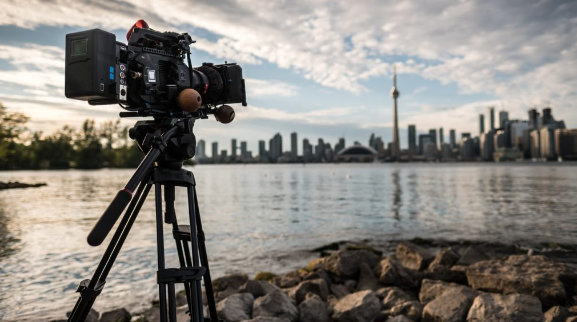
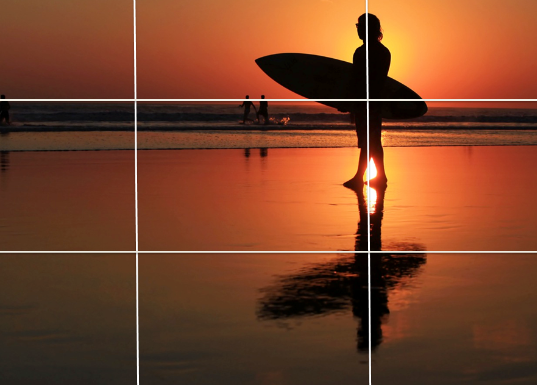
2. COMPOSITION
As far as the height of your camera is concerned, you want it to be somewhat close to the eye line of your subject. It doesn’t have to be right on. You can go a little higher.
This is about not only what’s in your frame, but it’s also what’s not in your frame. Decide how much of the person’s body you want for the camera angle. You may have one camera going from the waist up, that’s a medium shot, and a second camera on the face.
Think about the type of person you are interviewing. If it’s someone who is somewhat awkward on camera, then it’s usually not the best idea to have them looking directly at the camera. It’s usually more natural to have them off camera and actually talking to a human being. Bear in mind that asking someone to talk down the lense is also best for videos in which the speaker is addressing the audience directly. If the person is answering questions by an interviewer, it’s best to have them looking across the lens and not straight into it.
Another key point is headroom. When you’re framing your interview shot, you want the person’s eyes not only on a third of the grid lines vertically but also a third horizontally. So set the person up on one of these two thirds.
3. LIGHTING
At SmartCuts Creative, we use the 300D for the extra power it provides when needed on a large set.
Try and get this light as close as you can to your subject without being in the shot. If you already have a lot of natural soft light pouring in you may not need a whole lot of artificial light. Try to make the person’s face brighter than the background.
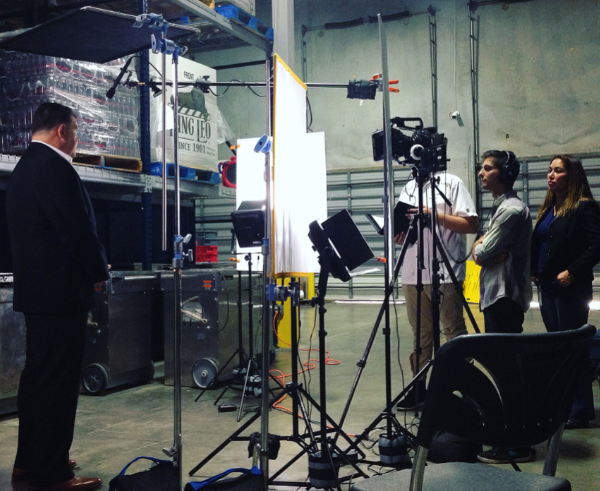
4. AUDIO
Parker’s team recommends working with the RODE NTG3 microphone. When you’re placing a microphone, think about it critically and ask yourself, if you were having a conversation with someone, where would you be? What you want to do is think of a kind of a natural position.
Crucially, make sure the mic is out of the frame, although in some cases it’s acceptable for a lapel mic to be showing, but do avoid the hanging wire at all costs.
7. INTERVIEWING PROCESS & TIPS
- Have the interviewee look at real people if you can. It’s going to be much easier then to provide a relaxed and more natural performance.
- If they are looking into the camera make sure they know how to do it well and that they practice.
- You can look at your notes but focus on the person you’re interviewing and listen. That’s one of the worst mistakes interviewers make. They’re thinking about their next question instead of listening to what the person is actually saying. The most inspired questions will come from listening to the person giving the answers.
Being an Interviewee
But what about being on the other side? It’s also important to think about the interviewee. With a creative agency, you can get advice on the interview process and being in front of the camera. In case you don’t have access to agencies like SmartCuts, here are 3 points to think about:
- Forget the audience – I know it sounds difficult, but it will make the interview appear to be more natural. Your responses will seem less scripted if you think of the interview as a catch up session with a friend. In other words, try and forget the camera, lighting and crew around you.
- Sit up straight – confidence is everything with video interviews. Especially if you are selling or discussing your brands and products/services. Before the cameras start rolling, be sure to roll your shoulders back, take a deep breath and then you should be ready. Your words are important, but so is how you’re portraying yourself to your viewers.
- Pronounce words with clarity and project your voice.
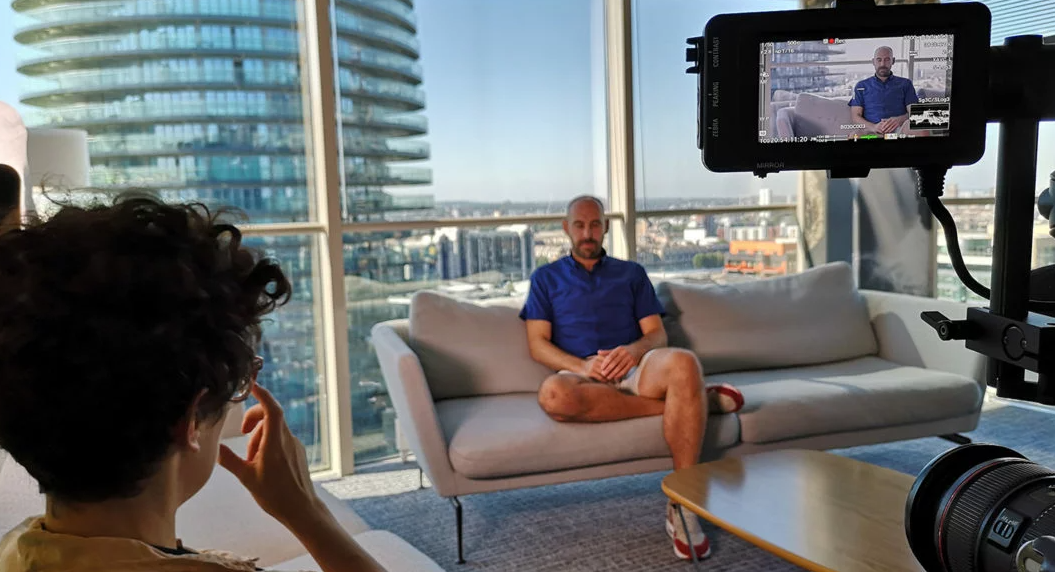
Sample Interviews – Styles and Techniques
Interviews can be stand-alone, as in broadcast or posted outside any other context. We often see this with well-known personalities on TV, but it’s also the technique used for customer testimonials or internal communication videos that aim to help staff get to know their management a bit. Sometimes these types of interviews can be one-on-one, but they can also be done in panel style. Here’s an example of the latter we did for Nespresso.
An international communication panel style interview done for Nespresso by SmartCuts Creative.
Documentary for World Heart Federation for World Chagas Day.
When doing interviews like this, you have to consider whether you’ll want to see the interviewer or not. In one sense this works well for reaction shots and to make the whole interview seem more like a casual conversation, but in another, it does distract from the speaker somewhat. But if you have no interviewer in the video, be sure to get the interviewee to answer questions by repeating a part of the question in his or her answer, otherwise you end up with clips that simply can’t stand alone. If that happens, you can insert slides with the question written up as animated text, but clearly it’s something you want to anticipate and not improvise as a fix for an oversight.
Interviews can also be, or become, the backbone to larger narrative. In such cases, there may be more than one person interviewed and, above all, there needs to be plenty of what we call broll, or covering footage. The interviewee’s voice then starts to act as a voice over. Here’s an example of a documentary we did for the World Heart Federation on Chagas, a disease that affects the heart. We put this together with interviews shot in a number of different countries. To keep a cohesive look, we opted for a black background. We also chose this for the added drama it introduces.
This is what you might call an observational documentary, in that there is no separate narrative voice over to link from one interview clip to another. The only voices we hear are the voices of the interviewees. Here’s a different style that we used for a documentary for ILO, a human-interest piece to highlight the UN agency’s role in supporting labor during the Covid pandemic.
As you can see, in this style you do link up interview clips with a narrative voice over. These interviews were shot by foreign crews we hired, who then sent us the footage for editing.
Here’s another example of a video that we built around an interview in Monaco with André Borschberg, Founder and Pilot of the Swiss Solar Impulse project.
For more interview samples, please visit our video & animation web page.
Implement Interviews in Your Marketing Schemes
Finally, here are some techniques listed on where to put your interviews once you’ve produced them:
- The good thing about videos, whether they are animation, testimonials or interviews, is that they are versatile.
- Put interviews on your website, especially if they are customer testimonials or if they show off your expertise in your field.
- Take quotes from your interviews and post them on social media.
- Send an interview out in one of your newsletters.
Final Thoughts
Interview videos are a great way to really show what your brand is about. The quality of the video, audio, and content of the interview will truly reflect who you are as a company.
This may feel like an overwhelming amount of new information. In that case, let SmartCuts collaborate with you, and take some of the workload off.
SmartCuts Creative provides a cutting-edge creative communication service: original concepts; clear, creative and concise content delivered competently. In other words, we help you get your message across through the following tools and services:
- Video Production & Animation – corporate video, social media video, drone, interviews, interactive, video marketing, explainer videos, infographics, motion graphics and lots more.
- Design & Branding – digital concept development & strategy, web & interactive design, visual identity, graphic design.
- Digital & Social Media Marketing – campaign strategy, design & management, copy & content writing, blogs & SEO.
- Virtual-hybrid Events & Tours / Video-conferencing – webinars, full event development & management, moderation & hosting, virtual visits.
- Media Training – public speaking & coaching, look & sound great on camera.
- Green-screen Production Studio – large video & photo production studio, 100% soundproof, professionally equipped 360o green-screen.
SmartCuts has 10+ years of experience, 100+ satisfied customers and 1,000+ successful productions.
We help you Say it Smart. Let’s talk!
To learn more about Parker Walbeck, feel free to visit his YouTube page.